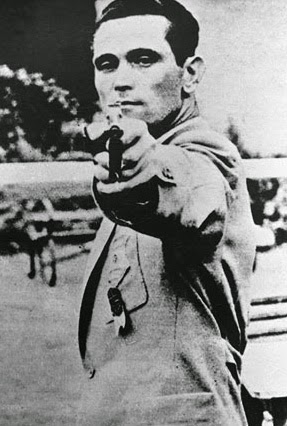No matter what the odds are..
When we face obstacles in our day-to-day life, our hurdles seem
very small in comparison to what many others have to face!
This is a real life story of engineer John Roebling building
the Brooklyn Bridge in New York, USA back in 1870. The bridge was completed in
1883, after 13 years.
In
1883, a creative engineer named John Roebling was inspired by an idea to build
a spectacular bridge connecting New York with the Long Island. However bridge
building experts throughout the world thought that this was an impossible feat
and told Roebling to forget the idea. It just could not be done. It was not
practical. It had never been done before. Roebling
could not ignore the vision he had in his mind of this bridge. He thought about
it all the time and he knew deep in his heart that it could be done. He just
had to share the dream with someone else. After much discussion and persuasion
he managed to convince his son Washington, an up and coming engineer, that the
bridge in fact could be built.
Working
together for the first time, the father and son developed concepts of how it
could be accomplished and how the obstacles could be overcome. With great
excitement and inspiration, and the headiness of a wild challenge before them,
they hired their crew and began to build their dream bridge.
The
project started well, but when it was only a few months underway a tragic
accident on the site took the life of John Roebling. Washington was also
injured and left with a certain amount of brain damage, which resulted in him
not being able to talk or walk. “We
told them so.” “Crazy men and their crazy dreams.” “It’s foolish to chase wild
visions.” Everyone
had a negative comment to make and felt that the project should be scrapped
since the Roeblings were the only ones who knew how the bridge could be built.
In
spite of his handicap Washington was never discouraged and still had a burning
desire to complete the bridge and his mind was still as sharp as ever. He tried
to inspire and pass on his enthusiasm to some of his friends, but they were too
daunted by the task. As he
lay on his bed in his hospital room, with the sunlight streaming through the
windows, a gentle breeze blew the flimsy white curtains apart and he was able
to see the sky and the tops of the trees outside for just a moment. It
seemed that there was a message for him not to give up. Suddenly an idea hit
him. All he could do was move one finger and he decided to make the best use of
it. By moving this, he slowly developed a code of communication with his wife.
He
touched his wife’s arm with that finger, indicating to her that he wanted her
to call the engineers again. Then he used the same method of tapping her arm to
tell the engineers what to do. It seemed foolish but the project was under way
again. For
13 years Washington tapped out his instructions with his finger on his wife’s
arm, until the bridge was finally completed. Today the spectacular Brooklyn
Bridge stands in all its glory as a tribute to the triumph of one man’s indomitable
spirit and his determination not to be defeated by circumstances. It is also a
tribute to the engineers and their team work, and to their faith in a man who
was considered mad by half the world. It stands too as a tangible monument to
the love and devotion of his wife who for 13 long years patiently decoded the
messages of her husband and told the engineers what to do.
Perhaps
this is one of the best examples of a never-say-die attitude that overcomes a
terrible physical handicap and achieves an impossible goal.
The Brooklyn Bridge shows us that, “dreams
that seems impossible can be realised with determination and persistence, no
matter what the odds are”
Yes it’s Possible




Comments
Post a Comment